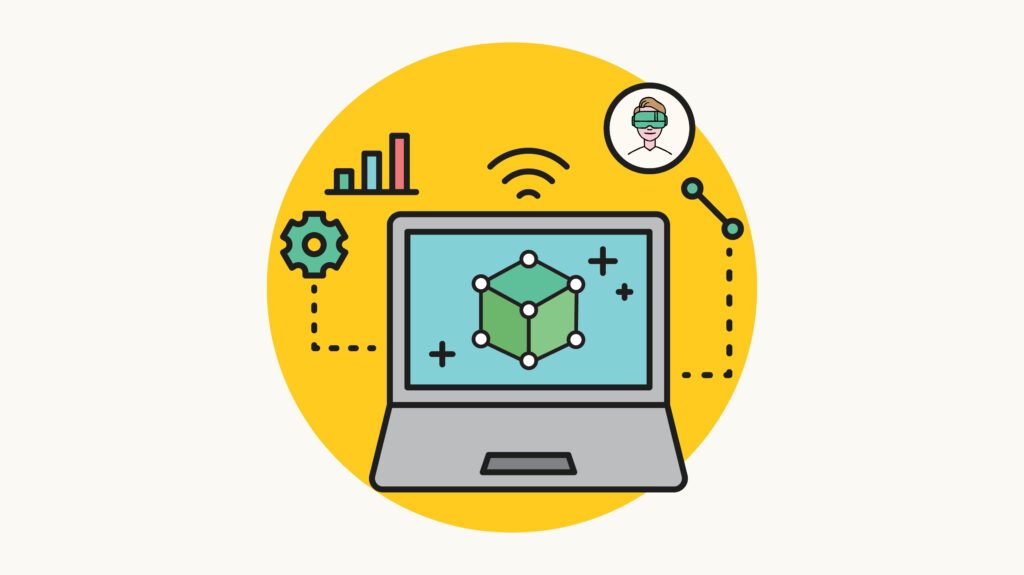The Results Of Immersive Learning In Action
Simulation training is changing the game in eLearning by turning passive knowledge into actionable skills. Through immersive experiences and thoughtful design, simulations help learners apply what they know in real-life contexts. This article explores how Kashida leverages simulation-based training to deliver impactful learning, drawing insights from notable projects like the Rowad Simulation, the Ashbal Course, and Makeen. Our focus in this article is on how design drives results and engagement.
Simulation Training: Turning Knowledge Into Action
Despite widespread access to online learning, one problem persists, which is learners struggle to apply theory in real-world scenarios. Simulation training addresses this by placing learners inside realistic, decision-driven environments where they can practice, fail, and try again without real-world risk.
Simulation is an imitation of real-world processes and decisions delivered in a controlled environment. Whether through game-based learning, story-driven journeys, AI assessments, or immersive VR simulations, this strategy creates hands-on learning. Trainees are challenged to think critically, act purposefully, and improve through feedback, all while staying engaged.
Research Insight
A study published by the National Training Laboratory shows that learners retain about 75% of knowledge through practice-based learning, such as simulations, compared to just 5% through lecture-based methods.
Why Instructional Design Matters
A simulation is only as strong as the design behind it. Thoughtful Instructional Design transforms a scenario into a learning engine. These elements are essential:
- Clear learning goals. Start with what learners must do better, not just know better.
- Narrative flow. A compelling storyline gives context and emotional connection.
- Realism. Environments and decisions must feel authentic and aligned with the learners' world.
- Feedback loops. Real-time, relevant feedback builds confidence and corrects the course.
- Scalable interaction. Adjust complexity based on skill level to suit both novices and experienced learners.
Design decisions are what make the difference between a one-time activity and lasting learning impact.
Learning Through A Virtual Factory
Launched in Saudi Arabia and backed by the Ministry of Education, Rowad is a financial literacy initiative for entrepreneurs. With goals aligned to the Kingdom's Vision 2030, Rowad needed a system that could deliver engaging, effective training at scale.
Kashida created a custom Open edX platform in both Arabic and English, with accessible design meeting WCAG AA standards. The centerpiece is a virtual factory simulation where learners manage production, staffing, and budgeting to develop real-world financial skills.
Key Design Features
- Realistic, culturally relevant scenarios
- Learner-led decision-making
- Story-driven modules reflecting financial challenges
- Performance tracking for continuous improvement
Impact In The First Year
- $100,000+ contributed towards the Saudi GDP
- 88 jobs contributed towards Saudi employment
- 4.5/5 overall program rating
- 1133 course completions
The Sedco Rowad simulation demonstrates how personalized choices, immersive storytelling, and responsive feedback can reinforce practical knowledge and behavioral change.
Simulation For Young Learners
To reach younger audiences, the Ashbal Course adapted financial education into an interactive, animated experience. Designed for children, it uses relatable storylines and visual simulations to teach budgeting and saving through decision-based learning.
Scenario example: Learners decide whether to spend or save pocket money, witnessing the consequences through engaging animated feedback.
Key Design Choices
- Simplified language and visuals
- Branching scenarios with immediate feedback
- Age-appropriate cultural relevance
Ashbal showcases how simulation-based learning can effectively develop essential life skills in children when aligned with cognitive development and social context.
Interactive Multi-Scenario Workplace Training
Makeen offers a different simulation approach, which is an immersive, scenario-based training inside a dynamic, interactive building layout. Learners move through different areas, encounter role-specific challenges, and practice decision-making relevant to their job functions.
Each scenario replicates real workplace dilemmas, interdepartmental coordination, customer handling, and compliance enforcement delivered in a high-accuracy environment.
Key Design Strengths
- Multi-scenario branching narratives
- Contextual navigation through a virtual environment
- Job-role specificity and realism
Makeen exemplifies how environmental context and adaptive difficulty can increase relevance and workplace readiness.
Lessons Learned And Best Practices
These case studies highlight the best practices for simulation design:
- Use narrative to anchor learning. Stories create emotional investment and context.
- Focus on behavior change. Simulations must drive the actions you want to see.
- Scale appropriately. Match the complexity to your audience and delivery platform.
- Design for reflection. Built-in feedback and post-simulation discussions cement learning.
- Track and repeat. Use engagement and performance data to refine your training.
Kashida's projects consistently apply these principles, which explain their broad adoption and documented success.
The Benefits: From Knowledge To Confidence
Simulation improves:
- Knowledge retention. According to the Journal of Educational Psychology, simulations increase retention rates by promoting experiential engagement and critical thinking.
- Decision making. Learners who practice realistic decision-making are more prepared and confident under pressure.
- Learner confidence. Safe environments allow for trial and error, which builds competence over time.
Across all three case studies, learners didn't just understand concepts; they began applying them. From children budgeting their pocket money to professionals managing operational challenges, simulation training proves to be transformative.
The Business Case For Simulation
Simulation training isn't just a learner benefit; it's a smart business move. Benefits include:
- Higher knowledge retention (up to 90%)
- Faster skill acquisition
- Increased learner confidence and engagement
- Cost savings vs. in-person training
Simulation creates repeatable, scalable environments for high-stakes practice, making it ideal for sectors like finance, healthcare, logistics, and education.
Recommendations For Implementation
- Start with a problem, not a platform. Identify the behavior or decision gap you want to address.
- Involve stakeholders early. Ensure alignment with business needs and learner profiles.
- Design for engagement first. Use story, feedback, and choice to motivate action.
- Choose the right tech. Match complexity to budget AI, VR, or mobile-ready scenarios.
- Measure outcomes. Build in assessments to track behavior change and ROI.
Simulation isn't plug-and-play. It requires strategic investment, expert design, and continuous improvement, but the payoff is worth it.
Conclusion
Simulation training is more than a buzzword. It's a proven solution to modern L&D challenges, combining realism, relevance, and results. Kashida's work with Rowad, Ashbal, and Makeen proves that simulation design, when grounded in strong pedagogy and aligned with local needs, can deliver meaningful, measurable impact.
Whether you're designing for adults or kids, shifting from in-person to digital, or adding AI-driven personalization, simulation training is your bridge from knowing to doing. And that bridge, when built right, leads to confident, capable learners and stronger organizations.










